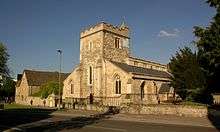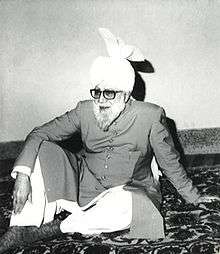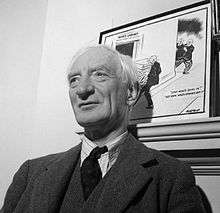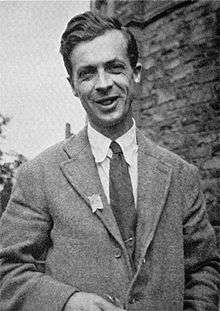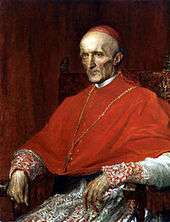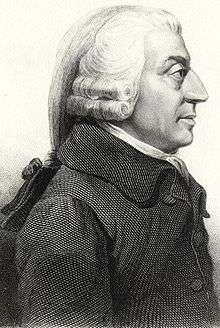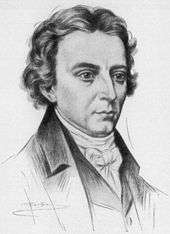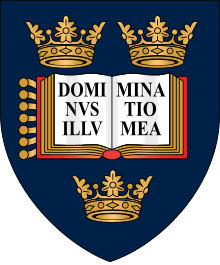Balliol College, Oxford
| Colleges and halls of the University of Oxford | ||||||||||||||||||
| Balliol College | ||||||||||||||||||
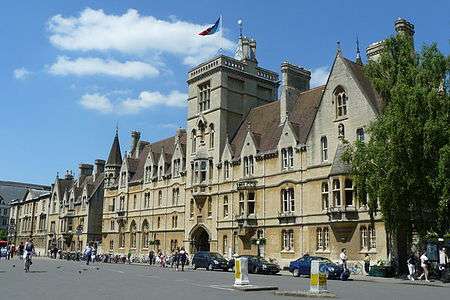 | ||||||||||||||||||
|
| ||||||||||||||||||
| College name | The Master and Scholars of Balliol College | |||||||||||||||||
| Named after | John I de Balliol | |||||||||||||||||
| Established | 1263 | |||||||||||||||||
| Sister college | St John's College, Cambridge | |||||||||||||||||
| Master | Sir Drummond Bone | |||||||||||||||||
| Undergraduates | 387[1] (2011/2012) | |||||||||||||||||
| Graduates | 228 | |||||||||||||||||
| Location | Broad Street | |||||||||||||||||

| ||||||||||||||||||
| Homepage | ||||||||||||||||||
| Boatclub | ||||||||||||||||||
 | ||||||||||||||||||
| Blazon | Azure, a lion rampant argent, crowned or, impaling Gules, an orle argent.[2] | |||||||||||||||||
Balliol College /ˈbeɪliəl/, founded in 1263,[3] is one of the constituent colleges of the University of Oxford in England.
Among the college's alumni are three former prime ministers (H. H. Asquith, who once described Balliol men as possessing "the tranquil consciousness of an effortless superiority", Harold Macmillan, and Edward Heath), five Nobel laureates, and a number of literary figures and philosophers. Political economist Adam Smith is perhaps the best known alumnus of the college.
In 2012 Balliol had an endowment of £62.5m.[4]
History
Balliol College was founded in about 1263 by John I de Balliol under the guidance of the Bishop of Durham. After his death in 1268, his widow, Dervorguilla of Galloway (their son and grandson both became Kings of Scotland), made arrangements to ensure the permanence of the college in that she provided capital and in 1282 formulated the college statutes, documents that survive to this day.
Under a statute of 1881, New Inn Hall was merged into Balliol College in 1887.[5] Balliol acquired New Inn Hall's admissions and other records for 1831–1887[6] as well as the library of New Inn Hall, which largely contained 18th-century law books.[5]
Traditions and customs
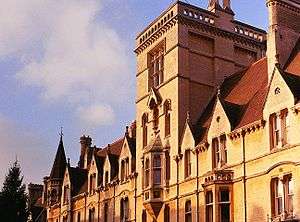

Along with many of the ancient colleges, Balliol has evolved its own traditions and customs over the centuries, many of which occupy a regular calendar slot.
The patron saint of the College is Saint Catherine of Alexandria. On her feast day (25 November), a formal dinner is held for all final year students within Balliol. This festival was well established by 1550. Another important feast is the Snell Dinner. This dinner is held in memory of John Snell, whose benefaction established exhibitions for students from the University of Glasgow to study at Balliol (the first exhibitioners were matriculated in 1699) one of whom was Adam Smith. The feast is attended by fellows of Balliol College, the current Snell Exhibitioners, and representatives from Glasgow University and St John's College, Cambridge.
By far the most eccentric event is The Nepotists carol-singing event organised by the College's Arnold and Brackenbury Society. This event happens on the last Friday of Michaelmas term each year. On this occasion, Balliol students congregate in the college hall to enjoy mulled wine and the singing of carols. The evening historically ended with a rendition of "The Gordouli" (see Balliol–Trinity rivalry below) on Broad Street, outside the gates of Trinity College, although in recent years the song has been sung from within the college walls.
The Masque of Balliol
In 1880, seven mischievous Balliol undergraduates published The Masque of B-ll--l, a broadsheet of forty quatrains making light of their superiors – the Master and selected Fellows, Scholars, and Commoners – and themselves. The outraged authorities immediately suppressed the collection, and only a few copies survived, three of which found their way into the College Library over the years, and one into the Bodleian Library. Verses of this form are now known as Balliol rhymes.
The best known of these rhymes is the one on Benjamin Jowett. This has been widely quoted and reprinted in virtually every book about Jowett and about Balliol ever since.
First come I.
My name is J-W-TT.
There's no knowledge but I know it.
I am Master of this College,
What I don't know isn't knowledge.
This and 18 others are attributed to Henry Charles Beeching. The other quatrains are much less well known.
William Tuckwell included 18 of these quatrains in his Reminiscences in 1900, but they all came out only in 1939, thanks to Walter George Hiscock, an Oxford librarian, who issued them personally then and in a second edition in 1955.[7]
Balliol–Trinity rivalry

For many years, there has been a traditional and fierce rivalry shown between the students of Balliol and those of its immediate neighbour to the east, Trinity College.[8] It has manifested itself on the sports field and the river; in the form of songs (of greater or less offensiveness) sung over the dividing walls; and in the form of "raids" on the other college. The rivalry reflects that which also exists between Trinity College, Cambridge and Balliol's sister college, St John's College, Cambridge.
In college folklore, the rivalry goes back to the late 17th century, when Ralph Bathurst, President of Trinity, was supposedly observed throwing stones at Balliol's windows.[9] In fact, in its modern form, the rivalry appears to date from the late 1890s, when the chant or song known as a "Gordouli" began to be sung from the Balliol side.[10]
The traditional words run:[11]
Gordouli
Face like a ham,
Bobby Johnson says so
And he should know.
The shouting of chants over the wall is still known as "a Gordouli", and the tradition continues as the students gather to sing following boat club dinners and other events. The traditional Gordouli is said to have been sung by Balliol and Trinity men in the trenches of Mesopotamia in the First World War.[12]t
The rivalry was given an extra edge in the early 20th century by the contrast between the radical tendencies of many Balliol students and Trinity's traditional conservatism and social exclusivity. The fact that Balliol (in contrast to Trinity) had admitted a number of Indian and Asiatic students also gave many of the taunts from the Trinity side a distinctly racist tone: Balliol students, for example, were sometime referred to as "Basutos".[13]
In Five Red Herrings (1931), a Lord Peter Wimsey novel by Dorothy L. Sayers, Lord Peter (a Balliol man) is asked whether he remembers a certain contemporary from Trinity. "'I never knew any Trinity men,' said Wimsey. 'The Jews have no dealings with the Samaritans.'"[14] Sayers also alludes to the rivalry in Murder Must Advertise (1933): Mr Ingleby, a Trinity man, comments, "If there is one thing more repulsive than another it is Balliolity."[15]
One of the wittier raids from Balliol, in 1962 or 1963, involved the turfing of the whole of Trinity JCR (complete with daffodils).[16] The last incident suspected to relate to the feud was the vandalisation of Trinity's SCR pond, which led to the death of all but one of the fish.[17]
On 21 January 1955, The Goon Show (writer Spike Milligan) broadcast on the BBC Home Service their version of Beau Geste, named "Under Two Floorboards - a Story of the Legion", which started with Ned Seagoon 'coming home from Balliol School, Cambridge'.
Buildings and grounds
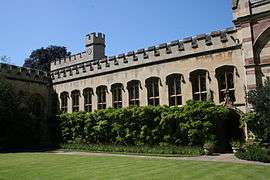
%2C_Oxford.jpg)
%2C_Oxford.jpg)
The college has been on its present site since its inception by Balliol's scholars as their residence with a lease dating to 1263 to them being the traditional "foundation" date.
Front quadrangle

The oldest parts of the college are the north and west ranges of the front quadrangle, dated to 1431, respectively the medieval hall, west side, now the "new library" and the "old library" first floor north side. The ground floor is the Old Senior Common Room. Balliol's second library pre-dates the publication of printed books in Europe. There is a possibility that the original Master's Chamber, south west side, adorned with a fine oriel window, is earlier than these; it is now the Master's Dining Room.
The Chapel is the third (perhaps fourth) on the site and was designed by William Butterfield in 1857.
Alfred Waterhouse designed the main Broad Street frontage of the college (1867-68), along with gateway and tower, known as the Brackenbury Buildings, replacing earlier structures (Staircases I-VII). The first staircase next to the Chapel contains the Organ Scholar's lodgings.
Garden Quadrangle
South-side is the front part of the Master's Lodgings on Broad Street from the Waterhouse improvements of the 1860s of the front quad. The neighbour to this is the Fisher Building of 1759 (Stc X) The undistinguished looking Stc XI, south west side, is in fact the oldest structure in this quadrangle, 1720, originally intended as accommodation for scholars from Bristol, hence its name. Continuing the west-side Stc XII-XIV dates from 1826, by George Basevi, and marks the beginnings of the college's academic renaissance being required for the increasing number of Commoners applying for places. Stc XV by Warren of 1912 filled in the last gap of the quadrangle; the ground floor and basement is the principal Junior Common Room. This unfortunately obscures the lines of the Salvin designed Stc XVI-XIX with Tower of 1853. As does the 1968 building by Beard Stc XX, replacing a Victorian structure. This completely hides a formal gateway similar to that at the Broad Street main entrance, this can be viewed outside from Little Magdalen Street, through the gap marked XIX one finds the small function room 'Massey Room'. At north side, of Stc XX is the 'Back Gate' which is part of the 1906 Warren building, west and north side, Stc XXI. At 1 St Giles Street is its neighbour which is part of the college and houses the Oxford Internet Institute. Beard's Stc XXII, replacing Victorian rooms, these were provided from the Vivian Bulkeley-Johnson benefaction. Beard's Stc XX and XXII are connected by the Snell Bridge accommodation at third floor level, which was provided from Glasgow University's Snell Benefaction.
The "new" hall (replacing that in the front quadrangle) is built on land given by Benjamin Jowett, a Victorian master of the college. Also by Alfred Waterhouse of 1877, it contains a Willis organ for concerts, again instituted by Jowett.
The ground floor contains the college bar and shop i.e. 'The Buttery' (west side) and the Senior Common Room lunch room (east side). The 1966 new Senior Common Room range (Stc XXIII)(northern and eastern sides) was a benefaction of the Bernard Sunley Foundation and contains some smaller rooms and the principal SCR lounge, replacing Victorian facilities. Below this is a Lecture Room {'LR XXIII'}.
The east side of the quad is a neighbouring wall with Trinity College, at the southern end is the Master's Garden, in front of the Chapel, and the Fellow's Garden in front of the 'Old' (Senior) Common Room. The Tower forming the corner between the 'Old Hall' and 'Old Library' is also by Salvin, of 1853 and balances that at Stc XVI-XIX.
Manor Road and Jowett Walk

The 20th century saw several further additions to the college's accommodation, the Martin Building of 1966 ('Holywell Minor', a reference to Holywell Manor, across the road) and the Dellal Building (1986) for graduates on Manor Road. The majority of research and post-graduate students are housed in the Holywell Manor complex.
Many undergraduates and some graduates live in buildings on Jowett Walk a phased development 1996-2004 (Phase 1 completed September 1996, Phase 2 completed July 2004),[18] containing a small theatre facility, five minutes' walking distance from the main College site; these two developments are on the outskirts of the Master's Field, the sports ground and pavilion facilities of the College. Jowett Walk has also provided accommodation for some non-Balliol undergraduates, as part of an arrangement with Wadham College, Oxford.
From 2010 St Cross Church, next to the Manor, has become the College's Historic Collections Centre, an extension to the Library's services. The church dates from the 11th or 12th century and is a Grade I listed building. This is the third time an Oxford college has incorporated a redundant church as a Library (see Lincoln College and St. Edmund Hall ).[19]
The Garden Quad at Balliol is the scene of the well-known limerick that parodies the immaterialist philosophy of Bishop Berkeley:
There was a young man who said, God
Must think it exceedingly odd
If he finds that this tree
Continues to be
When there's no one about in the Quad
and also of the response, by the Balliol-educated Catholic theologian and Bible translator Ronald Knox, which more accurately reflects Berkeley's own beliefs:
Dear Sir, your astonishment's odd:
I am always about in the Quad.
And that's why the tree
Will continue to be,
Since observed by, Yours faithfully, GOD.
Academia
Balliol College, and its previous Master Andrew Graham, played a major role in 2000–01 in setting up the Oxford Internet Institute. This was the world's first multidisciplinary research and policy centre in a university devoted to examining the impact on society of the Internet. It is a department of Oxford University, but is located in Balliol, and its previous Director (William Dutton) was a Professorial Fellow of Balliol.
Student life
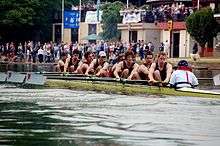
The college provides its students with facilities including accommodation, the Hall (refectory), a library, two bars, and separate common rooms for the fellows, the graduates and undergraduates. The JCR provides many services from laundry facilities, one of the few entirely student-run bars left in Oxford (the Manager, Lord/Lady Lindsay, is elected each year by students in the JCR) to a student-run cafeteria known as Pantry. There is a garden quadrangle and a nearby sports ground (the Master's Field) and boathouse. The sports ground is mainly used for cricket, tennis, hockey and football. Croquet may be played in the Master's Field or, in the summer term, in the garden quadrangle.
The majority of undergraduates are housed within the main college or in the modern annexes (Jowett Walk buildings) around the sports ground. The graduates are housed mainly within Holywell Manor which has its own bar, gardens, common room, gym and computing facilities.

Balliol also takes pride in its college tortoises. The original tortoise, who resided at the College for at least 43 years, was known as Rosa, named after the notable German Marxist Rosa Luxemburg. Each June, pet tortoises from various Oxford colleges are brought to Corpus Christi College where they participate in a very slow race; Balliol's own Rosa competed and won many times. Rosa disappeared in the Spring of 2004, and while numerous conspiracy theories have abounded, none is officially recognised by the College. However, on 29 April 2007, Chris Skidmore, a Graduate of Christ Church working at the House of Commons, donated a pair of tortoises - one to his own college, and one to Balliol, where he had attended an open day in 1999. The new tortoise, Matilda, died in April 2009. Taking care of the resident tortoise is one of the many tasks assigned to Balliol students each year. This position, known as "Comrade Tortoise", has been filled by a student every year.
A college society which no longer survives is the Hysteron Proteron Club, which aimed to live one day of each term backwards.[20]
People associated with Balliol
Notable people
In common with many Oxford colleges, Balliol has produced a wide range of graduates in the fields of economics, history, law, physiology, medicine, management, humanities, mathematics, science, technology, media, philosophy, poetry, politics, and religion who have contributed significantly to public life. Balliol people were, for example, prominent in establishing the International Baccalaureate, the National Trust, the Workers Educational Association, the Welfare State, the Campaign for Nuclear Disarmament and Amnesty International.[21]
Balliol has produced numerous Nobel Laureates. Five Nobel Laureates were students at Balliol: Cyril Norman Hinshelwood (Chemistry, 1956), John Hicks (Economics, 1972), Baruch S. Blumberg (Physiology or Medicine, 1976), Anthony J. Leggett (Physics, 2003) and Oliver Smithies (Physiology or Medicine, 2007). Seven more have been Fellows of the College: George Beadle (Physiology or Medicine, 1958), Norman Ramsey (Physics, 1989), Robert Solow (Economics, 1987), John Van Vleck (Physics, 1977), Gunnar Myrdal (Economics, 1974), Linus Pauling (both Peace, 1962 and Chemistry, 1954) and William D. Phillips (Physics, 1997).
Evolutionary biologist Richard Dawkins was a student there from 1959 to 1962.
Andrew Copson, Chief Executive of the British Humanist Association and President of the International Humanist and Ethical Union graduated in 2004.
In politics, Balliol has produced three British Prime Ministers: H. H. Asquith, Harold Macmillan, and Edward Heath, as well as politicians with senior leadership positions in the three major political parties including Secretary of State for Foreign and Commonwealth Affairs Boris Johnson who was mayor of London, MP for Uxbridge and South Ruislip, Jo Grimond (Liberal Leader), Denis Healey and Roy Jenkins. Richard von Weizsäcker, President of Germany from 1984 to 1994, also studied at Balliol.
In the law, Thomas Bingham was the Senior Law Lord of the United Kingdom, while Brian Hutton and Alan Rodger have held equivalent positions in Northern Ireland and Scotland, at one point, all three simultaneously.
Literary figures include Howard Marks, John Minford, Robert Southey, David Aaronovitch, Christopher Hitchens, Matthew Arnold, Gerard Manley Hopkins, Arthur Hugh Clough, Hilaire Belloc, Ronald Knox, Graham Greene, Joseph Macleod, G. F. Bradby, Anthony Powell, Aldous Huxley, Christopher Hollis, Robertson Davies, Nevil Shute and Algernon Charles Swinburne.
Notable Balliol philosophers include Adam Smith (Snell Exhibitioner), T.H. Green, J. L. Austin, Charles Taylor, Bernard Williams, R.M. Hare, Michael Sandel, Joseph Raz, Ian Gooch, Michael Otsuka, Derek Parfit, Michael E. Rosen and Timothy Williamson.
It has also contributed to the sporting world; I.A.K. Pataudi and his son Tiger Pataudi, both India cricket captains and the 8th and 9th Nawabs of Pataudi respectively, were both graduates who played for the Oxford team.
Balliol members have had a predominance as holders of the office of Chancellor of the University from the 20th Century to the present; George Nathaniel Curzon, Harold Macmillan, Roy Jenkins and Chris Patten, the last two being opposed in their election by Edward Heath and Lord Bingham of Cornhill respectively.
-

Shoghi Effendi Rabbani, The head of the Bahá'í Faith (1921–1957)
-

Shyamji Krishna Varma, Indian Independence activist
-

Boris Johnson, former Mayor Of London and later Foreign Secretary
-
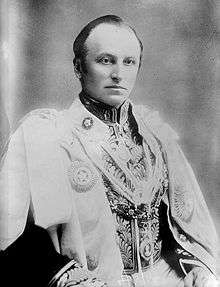
George Nathaniel Curzon, former Viceroy of India and Foreign Secretary
Academics and Fellows
As with all Colleges, Balliol has a more or less permanent set of teaching staff, known as Fellows. The college statutes provide for various categories of Fellows and these include both Tutorial Fellows and Professorial Fellows. Professorial Fellows are those Professors and Readers of the University who are allocated to the college by the University. One of these professorships is the Beit Professor of Commonwealth History, which is currently held by James Belich. Other professorships include the Boden Professor of Sanskrit and the Montague Burton Professor of International Relations. Official Fellows are those who hold tutorial or administrative appointments in the college. There are also Senior and Junior Research Fellows. The college can also elect "distinguished persons" to Honorary Fellowships.
The Fellows are supplemented by academics on short term contracts. In addition, there are visiting international academics who come to Oxford for periods of up to a year, an example of this is the George Eastman Visiting Professorial Fellowship.[22]
Masters
Balliol College is run by the Master and Fellows of the college. The Master of the college must be "the person who is, in their [the Fellows] judgement, most fit for the government of the College as a place of religion, learning, and education".[23] Although the rules in no way suggest there is a preference for an alumnus or Fellow of the college to be chosen there have been few who were not, only one in the 20th Century had no previous connection and the current Master of Balliol was a post-graduate student there (Snell Exhibitioner from Glasgow University), Sir Drummond Bone, a scholar of the Romantic poet Lord Byron. He has held the post since October 2011, following his retirement as Vice-Chancellor of the University of Liverpool in 2008.[24]
References
- ↑ "Undergraduate numbers by college 2011-12". University of Oxford. Archived from the original on December 2, 2012.
- ↑ "Balliol Archives - College Arms". ox.ac.uk.
- ↑ University of Oxford: Graduate Studies Prospectus - Last updated 17 Sep 08
- ↑ https://web.archive.org/web/20140218020245/http://www.ox.ac.uk/about_the_university/facts_and_figures/college_finances12.html. Archived from the original on February 18, 2014. Retrieved August 20, 2014. Missing or empty
|title=(help) - 1 2 "Library History". Balliol College, Oxford.
- ↑ "Balliol Archives - tracing a Balliol man". Balliol College, Oxford.
- ↑ "The Balliol rhymes" by Walter George Hiscock
- ↑ Clare Hopkins and Bryan Ward-Perkins, "The Trinity/Balliol Feud", Trinity College Oxford Report (1989-90), pp. 45-66.
- ↑ Hopkins and Ward-Perkins, "Trinity/Balliol Feud", p. 45.
- ↑ For the Gordouli, see G. Norman Knight, "The Quest for Gordouli", Balliol College Record, 1969; reprinted in Trinity College Oxford Report, 1984-5.
- ↑ "Gordoulis" was a popular brand of Egyptian cigarette. As "Gordouli", it became a nickname applied by Balliol men to a Trinity undergraduate, Arthur Galletti. Bobby Johnson, later Deputy Master and Controller of the Royal Mint, was an undergraduate at New College. See Knight, "Quest for Gordouli".
- ↑ Knight, "Quest for Gordouli".
- ↑ Hopkins and Ward-Perkins, "Trinity/Balliol Feud", pp. 54-60.
- ↑ Sayers, Dorothy L. (1968) [1931]. Five Red Herrings. London: New English Library. p. 157. Wimsey's Biblical quotation is from John 4: 9.
- ↑ Sayers, Dorothy L. (1969) [1933]. Murder Must Advertise. London: New English Library. p. 8.
- ↑ Hopkins and Ward-Perkins, "Trinity/Balliol Feud", p. 51.
- ↑ Segrove, Natalya. "Trinity fish murdered". Cherwell.org.
- ↑ "Jowett Walk project description". MJP Architects.
- ↑ Historic England. "Church of St Cross (1369450)". National Heritage List for England. Retrieved 9 July 2015.
- ↑ John Hely-Hutchinson, Carol Symphony: the life and times of Victor Hely-Hutchinson, pp. 39-40
- ↑ Near-complete lists of Fellows and students can be found in the published Balliol College Register; the 1st edition (1914, covering matriculations 1832-1914), 2nd edition (1934, covering matriculations 1833-1933) and 3rd edition (1953, covering matriculations 1900-1950).
- ↑ https://web.archive.org/web/20041206190450/http://www.balliol.ox.ac.uk/official/staff/senmem/index.asp. Archived from the original on December 6, 2004. Retrieved November 5, 2004. Missing or empty
|title=(help) - ↑ Statute II "The Master", clause 1
- ↑ "Election of New Master". Balliol College, Oxford. 18 March 2011. Retrieved 25 June 2011.
- John Jones, Balliol College: A History, Oxford University Press, 2nd edition, revised. 2005.
External links
| Wikimedia Commons has media related to Balliol College, Oxford. |
- Balliol College
- Junior Common Room (undergraduate students)
- Middle Common Room (graduate students)
- A virtual tour of Balliol College (360° photographs)
- Balliol College History & Archives
- Map sources for Balliol College, Oxford
